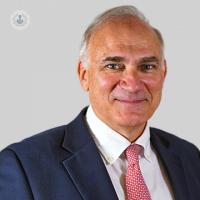Understanding postmenopausal bleeding
Autore:Once women have gone through the menopause, they should not experience any bleeding, spotting or coloured discharge. If this is experienced postmenopausally, you should seek the advice of a specialist. Mr Angus McIndoe, a renowned obstetrician and gynaecologist, explains what happens at a doctor’s appointment when investigating postmenopausal bleeding and the possible causes behind it. Postmenopausal bleeding is not usually serious, but it is important to have it investigated just in case.

What is postmenopausal bleeding?
Postmenopausal bleeding is any bleeding, or even a brown discharge, after the menopause. The menopause is when a woman has not had a period for 12 months, so any bleeding more than 12 months after her last period.
How common is postmenopausal bleeding?
Postmenopausal bleeding is not very common, but it is one of the more common reasons for seeing a gynaecologist.
When should I see a doctor?
Any bleeding, no matter how slight, pink or brown discharge or just spotting are all reasons to see a doctor when it occurs after the menopause.
What causes postmenopausal bleeding?
The most common cause of postmenopausal bleeding is thinning of the lining of the vagina and uterus. This thinning is called “atrophic”. Other causes are polyps within the uterus, ovarian cysts and abnormal growth of the lining of the uterus. Very occasionally postmenopausal bleeding can be a sign of cancer of either the uterus, the cervix or the ovaries.
What does the process of diagnosis look like?
The first investigation of postmenopausal bleeding is a pelvic ultrasound scan which is usually done with a probe in the vagina. We look carefully at the lining of the uterus and the ovaries. Any abnormality there can be detected with ultrasound. If the lining of the uterus appears normal and thin, it is very unlikely there is any abnormality within the uterus.
After an ultrasound scan, the next step is to examine the cervix carefully to make sure that it is healthy. Provided both of these examinations are normal nothing further needs to be done and postmenopausal bleeding does not usually recur. If the lining of the uterus looks thickened on an ultrasound scan, then we usually take a sample from the thickened endometrium with a procedure called a hysteroscopy and D & C.
A hysteroscope is an instrument that allows us to look directly at the lining of the uterus. This can be done under local anaesthetic or general anaesthetic. D & C stands for dilation and curettage, which means that we stretch up the neck of the womb and gently scrape the lining of the uterus to get a sample from it. This is the best way to check whether there is any abnormality in the lining of the uterus.
If you are experiencing postmenopausal bleeding, make an appointment with an expert.


